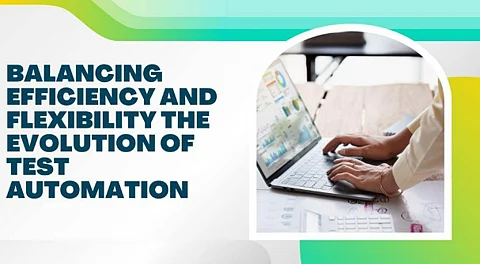

In this modern era, Test automation has become a critical factor in modern software development, helping organizations streamline testing processes while ensuring high-quality products. Ashwin Choubey, a seasoned expert in software testing, explores the innovations in test automation in his latest research, focusing on the comparison between script-based and script-less automation. His insights offer a structured perspective on selecting the right approach for different organizational needs.
Script-based automation has long held the crown in software testing. The very core of this approach is structured scripts created using programming languages such as Java, Python, and JavaScript. It gives incredible control over the execution of tests, suitable for complicated testing situations. Companies that embrace script-based automation report greater levels of accuracy and preciseness in tests, especially in API and security testing.
This approach brings the additional advantage of being integrated into CI/CD pipelines in a seamless manner. Thus, teams using this methodology will notice an overall improvement in test reliability derived from well-structured frameworks extending much farther into regression testing and at a considerably detailed level with test coverage. One of the deterrents to the use of script-based automation is the steep learning curve and the very high maintenance effort, which is resource-intensive requiring skilled professional workforce to develop and properly maintain these test scripts.
Script-less automation is a viable alternative that addresses the problems of script-based testing. Hence, construction of a script-less testing environment allows non-technical members like business analysts and domain experts to participate in the test automation efforts. Using graphical interfaces and other AI-enabled tools, organizations would quickly build and execute test cases without having in-depth programming knowledge.
This type of automation requires little or no scripting, which greatly reduces the time and effort needed for test creation and maintenance. The organizations that utilize this method report shorter release cycles with the test teams swiftly adapting to changes in software requirements. Furthermore, automated self-healing features with AI-enhanced functionality available in modern script-less tools ensure reliability by allowing the test scripts to be automatically modified when a UI element changes. However, one disadvantage could be that complex test scenarios that need a large amount of customization may pose limitations to script-less automation.
Acknowledging the advantages and disadvantages of both techniques, many organizations are advancing toward a hybrid test automation strategy. This approach draws on the accuracy of script-based automation and the ease-of-use of any script-less tools. Teams can also gain maximum efficiency with minimal resource constraints by leveraging script-based frameworks for API and performance testing and script-less tools for UI testing.
Hybrid walkways have been an added boon to huge enterprises in which dependent teams often require different levels of automation capabilities. It has more scalability, lower maintenance costs, and much efficient resource use compared to others. According to studies, organizations that have moved to the hybrid model have improved their speed of testing cycles while having lower rates of defect leakage, and soon this yields improvements in software quality at lower operating costs.
The integration of artificial intelligence and cloud computing is shaping the future of test automation. AI-powered automation tools are now capable of predictive analytics, anomaly detection, and automated script generation. These innovations improve test accuracy and reduce human intervention, allowing testing teams to focus on strategic quality assurance tasks.
Cloud-based testing platforms are also transforming the automation landscape. By leveraging cloud infrastructure, organizations can execute tests across multiple environments and devices simultaneously, reducing costs associated with maintaining on-premise testing setups. This shift is particularly beneficial for businesses with global operations, ensuring seamless cross-platform compatibility and accessibility.
The choice regarding cost plays an equally important role in the decision; while script-based automation incurs a higher initial expenditure with respect to qualified manpower and infrastructure, it promises savings in the long run through improved test reliability and lower defect leakage. Script-less automation, however, affords rapid implementation at a lower entry cost, though it may require continued investment in proprietary tools and vendor assistance.
It is imperative for organizations to consciously evaluate the testing needs, human skill sets, and budget limitations; hence they can establish the right path to an automation approach. Choice among different software automation approaches depends on factors like project complexity, scale of applications, and required speed of execution.
The swiftly transforming automation landscape is being spearheaded by AI-driven innovations and cloud adoption. Future developments in machine learning, low-code/no-code test platforms, and AI-powered test case generation would multiply the capacity of the automation tool at an exponential rate. These will lead organizations to a more and more hybrid form of automation, as they seek greater and greater efficiencies with the accuracy of the result.
In conclusion, Ashwin Choubey’s research highlights the importance of strategic decision-making in test automation. By understanding the strengths of each approach and leveraging emerging technologies, businesses can optimize their software testing processes for long-term success. As the industry moves towards intelligent automation, staying adaptable and embracing innovation will be key to maintaining a competitive edge.
